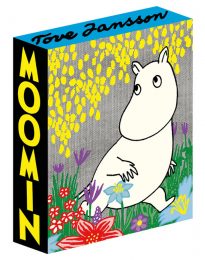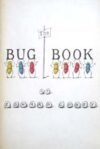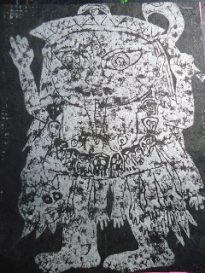
Black Hole (paperback)
The first issues of Charles Burns’s comics series Black Hole began appearing in 1995, and long before it was completed a decade later, readers and fellow artists were speaking of it in tones of awe and comparing it to recent classics of the form like Chris Ware’s Jimmy Corrigan and Daniel Clowes’s Ghost World. Burns is the sort of meticulous, uncompromising artist whom other artists speak of with envy and reverence, and we asked Ware and Clowes to comment on their admiration for Black Hole:
“I think I probably learned the most about clarity, composition, and efficiency from looking at Charles’s pages spread out on my drawing table than from anyone’s; his was always at the level of lucidity of Nancy, but with this odd, metallic tinge to it that left you feeling very unsettled, especially if you were an aspiring cartoonist, because it was clear you’d never be half as good as he was. There’s an almost metaphysical intensity to his pinprick-like inkline that catches you somewhere in the back of the throat, a paper-thin blade of a fine jeweler’s saw tracing the outline of these thick, clay-like human figures that somehow seem to “move,” but are also inevitably oddly frozen in eternal, awkward poses … it’s an unlikely combination of feelings, and it all adds up to something unmistakably his own.
“I must have been one of the first customers to arrive at the comic shop when I heard the first issue of Black Hole was out 10 years ago, and my excitement didn’t change over the years as he completed it. I don’t think I’ve ever read anything that better captures the details, feelings, anxieties, smells, and cringing horror of my own teenage years better than Black Hole, and I’m 15 years younger than Charles is. Black Hole is so redolently affecting one almost has to put the book down for air every once in a while. By the book’s end, one ends up feeling so deeply for the main character it’s all one can do not to turn the book over and start reading again.” –Chris Ware
“Charles Burns is one of the greats of modern comics. His comics are beautiful on so many levels. Somehow he has managed to capture the essential electricity of comic-book pop-art iconography, dragging it from the clutches of Fine Art back to the service of his perfect, precise-but-elusive narratives in a way that is both universal in its instant appeal and deeply personal.” –Dan Clowes
Suburban Seattle, the mid-1970s. We learn from the out-set that a strange plague has descended upon the area’s teenagers, transmitted by sexual contact. The disease is manifested in any number of ways — from the hideously grotesque to the subtle (and concealable) — but once you’ve got it, that’s it. There’s no turning back.
As we inhabit the heads of several key characters — some kids who have it, some who don’t, some who are about to get it — what unfolds isn’t the expected battle to fight the plague, or bring heightened awareness to it , or even to treat it. What we become witness to instead is a fascinating and eerie portrait of the nature of high school alienation itself — the savagery, the cruelty, the relentless anxiety and ennui, the longing for escape.
And then the murders start.
As hypnotically beautiful as it is horrifying, Black Hole transcends its genre by deftly exploring a specific American cultural moment in flux and the kids who are caught in it- back when it wasn’t exactly cool to be a hippie anymore, but Bowie was still just a little too weird.
To say nothing of sprouting horns and molting skin…
Fiction – Graphic Novels | Pantheon | Paperback | October 18, 2007 |
$ 19.95



